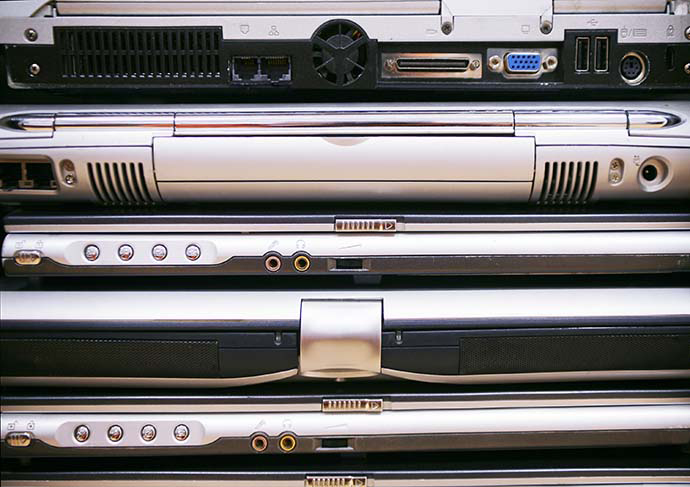
After extended service phases out in 2027-2028, retired laptops will help drive recovery of copper, aluminum and other metals. | Photo by Ivan Hafizov
These past few weekends, I found myself scrolling through Amazon’s refurbished‑laptop listings—a habit I use to gauge what’s moving through the secondary market. Page after page told the same story: hundreds of Dell Latitudes, HP EliteBooks and Lenovo ThinkPads advertised with the familiar Windows 10 Pro badge.
That sight raised a harder question: Why, in late 2025, are refurbishers still pre‑loading an operating system that has officially reached end‑of‑support and Amazon listing them despite Microsoft ending its support to that version of its operating system?
After speaking with a half dozen authorized refurbishers, I was told that the dominance of Windows 10 in refurbished channels is a matter of necessity. Most laptops entering resale today come from enterprise refresh cycles between 2019 and 2023, built around Intel’s 8th‑ to 10th‑generation processors that either lack TPM 2.0 or fail other firmware thresholds required by Windows 11.
For refurbishers, reinstalling Windows 10 Pro remains the most seamless, compliant option. It activates instantly under Microsoft’s existing refurbishment licensing, avoids compatibility problems, and delivers a predictable customer experience.
Microsoft’s Extended Security Updates program, which allows paid patching through 2028, effectively insulates resale inventory for the next few years and keeps devices affordable for risk‑averse buyers.
But while Windows 10 models still dominate refurbished inventory, that runway isn’t endless. As Extended Security Updates taper off between 2027 and 2028, Windows 10 devices will lose their compliance status, forcing a mass phase‑out. IDC and Gartner model roughly 500 million active business PCs worldwide, and an estimated 35-40% of them fail Windows 11 requirements. The eventual turnover could exceed 320 million units—a wave that will test both refurbishment capacity and end‑of‑life logistics.
While metal recovery and “urban mining” firms will eventually process that hardware, the present story sits firmly in the resale economy. From now through 2026, refurbishers are effectively managing a software afterlife, extending productivity for millions of systems the OEM no longer supports.
What this means for refurbishers and ITAD providers
For ITAD and refurbishment companies, the next couple of years represent a rare moment of equilibrium: abundant supply, steady consumer interest and an operating system that still carries both trust and functionality. Firms involved in the sector should optimize imaging workflows, transparency in licensing and sustainability‑compliant remarketing to maximize value before the inevitable decline begins. And partnerships with educational distributors and circular‑procurement platforms will matter far more than downstream scrap flows.
Later on, the eventual recycling surge will carry measurable economic and environmental weight—but that stage still sits a few years downstream. Today’s refurbishers are stretching Windows 10’s lifespan with remarkable success; eventually those same devices will become tomorrow’s feedstock for recovery and reuse.
By the late 2020s, the refurbished inventory now fueling the Windows 10 market will be entering the back end of the value chain, feeding what the UN E‑Waste Monitor expects to become an 82 million ton global e-scrap stream by 2030.
If captured efficiently, that transition could recirculate thousands of tons of copper, aluminum, silver and gold that would otherwise disperse into mixed waste. Analysts estimate only about 35% of the world’s e‑scrap currently reaches formal recycling channels; raising that rate even modestly could unlock several billion dollars in recoverable materials while cutting associated emissions and landfill risk.
Automation, robotics and AI sorting will define that next phase. The same digital precision that now allows refurbishers to wipe drives and verify COA licenses will soon guide disassembly lines capable of extracting high‑purity metals without manual teardown.
In that sense, the eventual “urban mining” wave will not replace the Windows 10 refurbishment economy—it will evolve directly from it. The devices keeping the refurbished market alive today are also building tomorrow’s resource pipeline, proving that reuse and recovery are not separate stories, but consecutive chapters in the same circular‑hardware narrative.
More stories about computers

